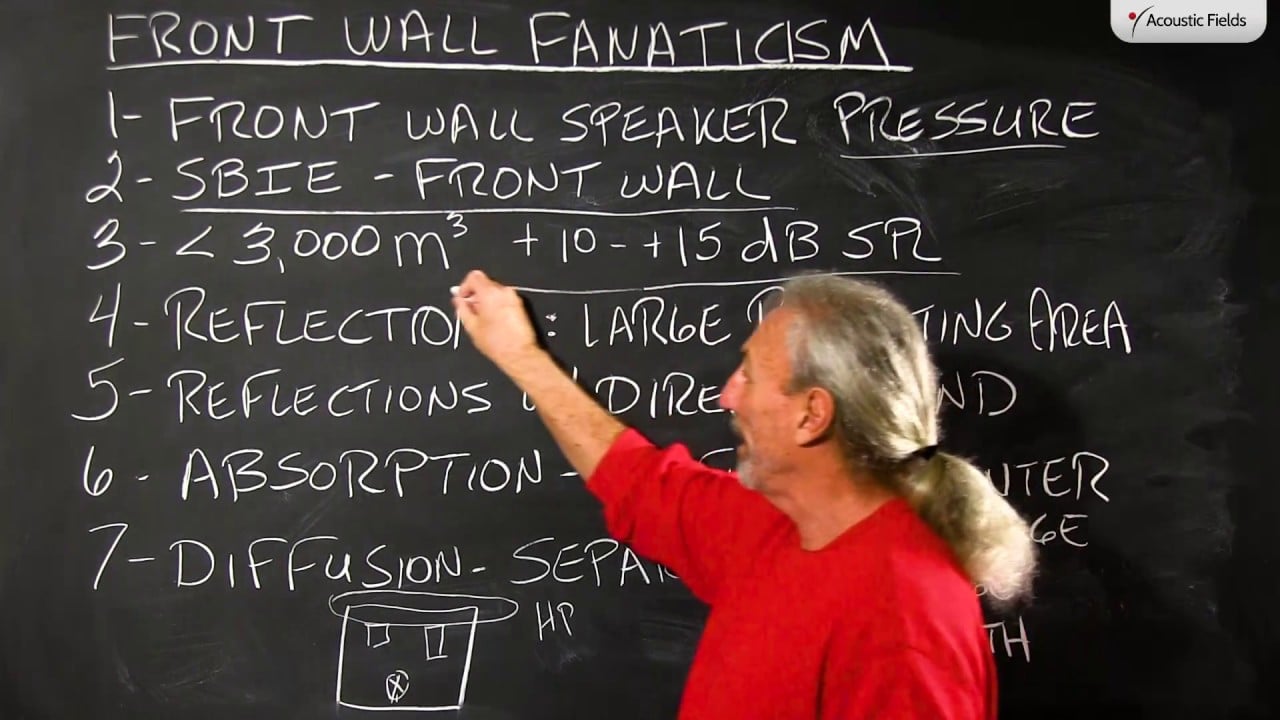Let’s talk about front wall and it’s issues we’ll call it Front Wall Fanaticism and we have two issues that we have to be concerned about with our front wall. We have a pressure issue because of course we know that our speaker’s no matter what we’re doing in the room are usually located close to the front wall so this area in here between the speakers in the front wall it’s going to be an area of very high pressure okay and we’re going to do a video when I get to Hollywood again on our studio about the pressure differences at the listing position versus behind the speaker and how you need to really balance those out and how most people do not.
Even in the pro studios you can take readings between the monitors and the front wall and see this huge pressure boost so you have to be very very careful of that. So we have pressure as our issue and that’s as a result of a term called Speaker Boundary Interference Effect or SBIE and we look in our database and we now have a database of over 135 built measured rooms, in less than 3,000 cubic meters we see a plus 10 to a plus 15 DB bump in this area here so we have to be really careful of the pressure and we know that speakers not only radiates energy from the front they also radiates energy from other areas too especially low frequency energy.
So that’s our pressure issue with the front wall then of course we have reflections, we have reflections from the side walls moving back and forth, we have reflections off the rear wall traveling across the listing or monitoring position and that rear wall and front wall are both large radiating surface areas so in essence they become speakers so we have to be very very careful about balancing everything from the front pressure and reflection issue with the direct sound because our goal is not to eliminate the room but to minimize its impact. We’ve to get it to kind of fall below a kind of a threshold of room distortion and direct sound so we have to have a balancing act between the two. So we want to keep that ratio and it’s going to change for usage in playback rooms, maybe you want a little bit more room especially if you have a larger room.
In control and mixing environments you probably want less room because you want more definition of sound and not so much room sound. So we always have our two technologies that we use, absorption and diffusion and we know from our past videos that they’re very usage dependent so if our goal in our control rooms is a good strong center image with great definition we’ll probably want to use absorption. Diffusion can give us some nice separation and definition but it also opens up the image in the width so placing diffusion on the front wall and the rear wall in a listening room is a really good thing, you really open up the soundstage for your presentation. So front wall, two main issues pressure and reflections, we have to manage him and make sure we get a nice balance between the pressure, the reflections and the direct sound. So three variables we have to consider hope this helps
—
This is an unedited transcript from our video series from Acoustic Fields. There will be some errors in grammar and sentence structure that occur during this translation process.
For complete understanding and comprehension, please view the video which is included in this text. For any additional information regarding this topic or others relating to room acoustics, please contact us directly at:
P: 520 – 392 – 9486







